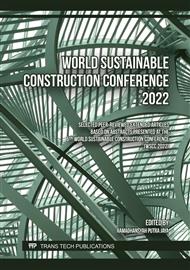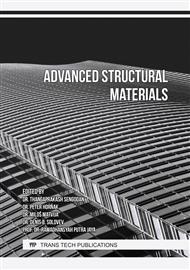p.83
p.93
p.101
p.109
p.117
p.125
p.131
p.137
p.143
Oxide Film Formation on Stainless Steel 304L by Anodizing Method with Different Power Sources
Abstract:
In order to generate a nanoporous oxide film, stainless steel 304L is anodized using an alternating current (AC) and direct current (DC) source in an ethylene glycol solution containing ammonium fluoride, NH4F, and water, H2O. This study focuses on the differences between AC and DC anodizing in terms of current density versus time response, thickness, and depth of the oxide film formed on the anodized specimens, surface roughness, and element composition of the specimens because there is limited study on AC anodizing of stainless steel. In 0.5% 0.3M NH4F and 3% H2O in a glycol solution, the AC and DC anodizing is conducted for 30 minutes at voltages ranging from 30 V to 50 V and 21.2 V to 35.4 V, respectively. The current density versus time response revealed that AC anodizing produced more current density than DC anodizing. As for the thickness and depth of the generated oxide films, only the specimens that had been anodized in AC indicated an increase in these films, whereas specimens that had been anodized in DC showed the metal dissolving as the specimens degraded. The surface roughness of AC anodized specimens reduced with increasing anodizing voltage, whereas DC anodized specimens increased with increasing anodizing voltage. The element composition of the anodized specimens revealed that the mass percentage of oxygen, O element is higher for AC anodized specimens compared to DC specimens. This suggests that AC anodizing on stainless steel might offer important advantages and should be further researched.
Info:
Periodical:
Pages:
117-123
Citation:
Online since:
March 2023
Keywords:
Price:
Сopyright:
© 2023 Trans Tech Publications Ltd. All Rights Reserved
Share:
Citation:



